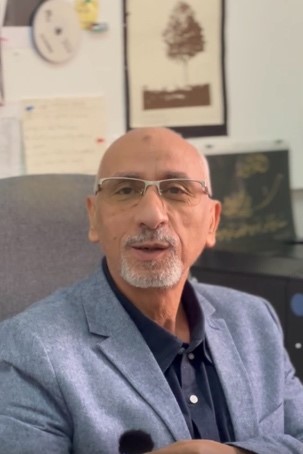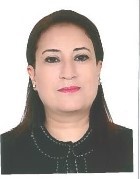
Duration
Four Years
Medium of instruction
English
Degree awarding body
SCD
Program Mission
The mission of the Animation Program is to provide students with the fundamental knowledge of animation design and visual storytelling through theoretical information and practical skills in an imaginative environment to support students to use their unique artistic voice and enhance creative skills to pursue a professional career.
Accreditation
Institutionally Accredited by OAAAQA & Overseen by the MOHERI in the Sultanate of Oman.
Substantial Equivalency of the Bachelor of Science in Animation from the National Association of Schools of Art and Design (NASAD).
Quality Assurance Certificate from the Accreditation and Quality Assurance Commission for Higher Education Institutions (AQACHEI - Jordan).
Program Description
The Animation program focuses on animation film making using various forms and techniques through a distinct academic pedagogy. The program gives an opportunity for students to develop a personal style through in-depth practices and theoretical knowledge. Students develop the ability to manage and solve design problems through conceptual and critical thinking in the field of animation. Aligned to the college mission, the program facilitates a creative environment using latest technology animation labs and studios for students, to learn individually and in groups, to be professional animators.
Program Objectives
- Develop creative skills to grow aesthetically and professionally in animation.
- Create the illusion of movement using practical skills and theories in the field.
- Develop sense of imagination, creative personal expression to contribute to the discipline.
- Demonstrate skillfully contemporary design solutions in animation.
Program Learning Outcomes
- Practice general educational knowledge such as research skills, business and psychological principles to apply them in their respective profession.
- Develop English proficiency level to communicate effectively using art and design terminology.
- Apply art and design elements and principles to create artworks.
- Demonstrate skilfully artistic ideologies and creative solutions in animation.
- Value historical and contemporary trends in animation.
- Develop animation artworks using advanced technology to meet modern industry expectations
Career Opportunities
- An animator creates a large series of images that form the animation seen in movies, commercials, television programs or video games.
- Graduates work for movie, television and video game studios and software publishers.
- Animators may opt to work in the government sector in reporting, preparation of campaigns using character animation, and simulations for military and police division creating cultural related animation.
- Another field is the Ministry of Education and Ministry of Higher Education in preparation of educational material such as interactive animated environments for children’s E-Books and online lessons.
- A third field is the entertainment sector such as film and movies, TV production, and game design.
- Self- employment is also a common option for graduates who are interested in entrepreneurship as the government is supporting and facilitating the establishment of small businesses.
Year
Semester 1
ART510
Drawing I
3
DES511
Design Studio I A/B *
4
DES512
Technical Graphics I
3
DES513
Introduction to Design
3
ENG500
English for Art & Design I
3
LRT600
Learning Research Techniques
3
Semester 2
PHO510
Photography I
3
ART610
Drawing II
3
DES611
Design Studio II A/B *
4
ENG600
English for Art & Design II
3
GRA510
Introduction to Computer Graphics *
3
Year
Semester 1
ANI611
Fundamentals of Animation design
3
ENG800
English Academic Writing
3
GRA711
Introduction to Typography
3
ART719
Sketching
3
GRA610
Intermediate Computer Graphics
3
ARA510
Arabic Creative Writing
3
Semester 2
ANI711
Animation Design I: Cutout Animation
3
ANI710
Drawing for Animation
3
ANI712
Computer Animation I
3
ANI715
History of Animation
3
ART613
Perspective Drawing
3
Year
Semester 1
ELE500
Elective
3
ANI713
Animation Design II: Stop Motion
3
ANI812
Storyboard Design
3
ANI716
Character Design I
2
ANI714
Computer Animation II
3
CST510
History of Oman Civilization
3
Semester 2
ANI810
Animation Design III: Cell Animation
3
ANI817
Layout & Background Design
3
ANI815
Character Design II
2
ANI811
Computer Animation III
3
ENG700
Fundamentals of Oral Communication
3
PHO610
Digital Video Basics
3
Year
Semester 1
ANI813
Film Production
3
ANI717
Video Editing
3
ANI814
Motion Design
3
ELE700
Elective
3
PSY500
Introduction to Psychology
3
Semester 2
ANI820
Animation Design Internship
1
ANI819
Senior Studies/Animation Project
5
ANI818
Portfolio Design
3
MKT611
Digital Marketing
3
ENT600
Entrepreneurship
3
Semester 1
ART510
Drawing I
3
DES511
Design Studio I A/B *
4
DES512
Technical Graphics I
3
DES513
Introduction to Design
3
ENG500
English for Art & Design I
3
LRT600
Learning Research Techniques
3
Semester 2
PHO510
Photography I
3
ART610
Drawing II
3
DES611
Design Studio II A/B *
4
ENG600
English for Art & Design II
3
GRA510
Introduction to Computer Graphics *
3
Semester 1
ANI611
Fundamentals of Animation design
3
ENG800
English Academic Writing
3
GRA711
Introduction to Typography
3
ART719
Sketching
3
GRA610
Intermediate Computer Graphics
3
ARA510
Arabic Creative Writing
3
Semester 2
ANI711
Animation Design I: Cutout Animation
3
ANI710
Drawing for Animation
3
ANI712
Computer Animation I
3
ANI715
History of Animation
3
ART613
Perspective Drawing
3
Semester 1
ELE500
Elective
3
ANI713
Animation Design II: Stop Motion
3
ANI812
Storyboard Design
3
ANI716
Character Design I
2
ANI714
Computer Animation II
3
CST510
History of Oman Civilization
3
Semester 2
ANI810
Animation Design III: Cell Animation
3
ANI817
Layout & Background Design
3
ANI815
Character Design II
2
ANI811
Computer Animation III
3
ENG700
Fundamentals of Oral Communication
3
PHO610
Digital Video Basics
3
Semester 1
ANI813
Film Production
3
ANI717
Video Editing
3
ANI814
Motion Design
3
ELE700
Elective
3
PSY500
Introduction to Psychology
3
Semester 2
ANI820
Animation Design Internship
1
ANI819
Senior Studies/Animation Project
5
ANI818
Portfolio Design
3
MKT611
Digital Marketing
3
ENT600
Entrepreneurship
3
Course Details


Head of Visual Communication Department

I want to welcome you into the world of innovation and creativity. Now you are part of the hup of design creativity. you will have a great message is to provide your community with the best design solutions that contribute to the development of these societies throughout your design career.
Dr. Sherif Galal,
Head of Visual Communication Department
Scientific College of Design

1
Success in General Education Diploma or its Equivalent.2
The student should get a minimum grade of C- in Design Studio I & Design Studio II courses.3
The student should get C- at least in Introduction to Computer Graphics courseBS - Animation
Tuition Fees
| Duration | Credit Hours | Fees | Other Fees | Sub Total | |
|---|---|---|---|---|---|
| General Foundation Program | 3 Semesters | - | 2,575 OMR | - | 2,575 OMR |
| Design Foundation Program | 2 Semesters | 33 | 2,640 OMR | 250 OMR | 2,890 OMR |
| Bachelor Degree | 6 Semesters | 99 | 7,920 OMR | 750 OMR | 8,670 OMR |
| Grand Total | 14,135 OMR | ||||
* Fees / tuitions are subject to changed accoridng to the college financial polcies / procedures and upon MoHERI approval
Finance Details
Oman Arab Bank
3128231666500
Bank Muscat
0313029205120016
Sohar International Bank
043020017921
*All payment are accepted through bank deposit.



